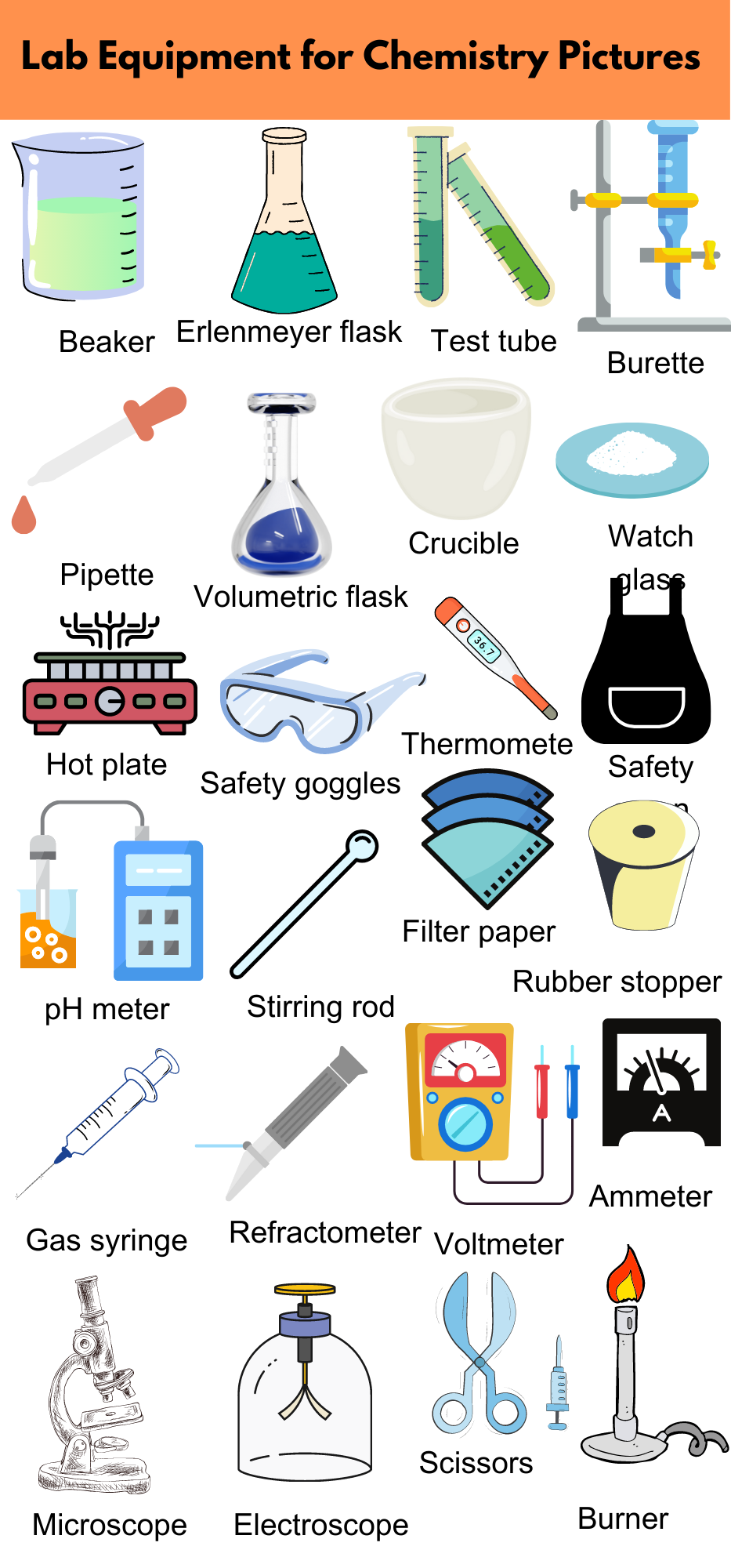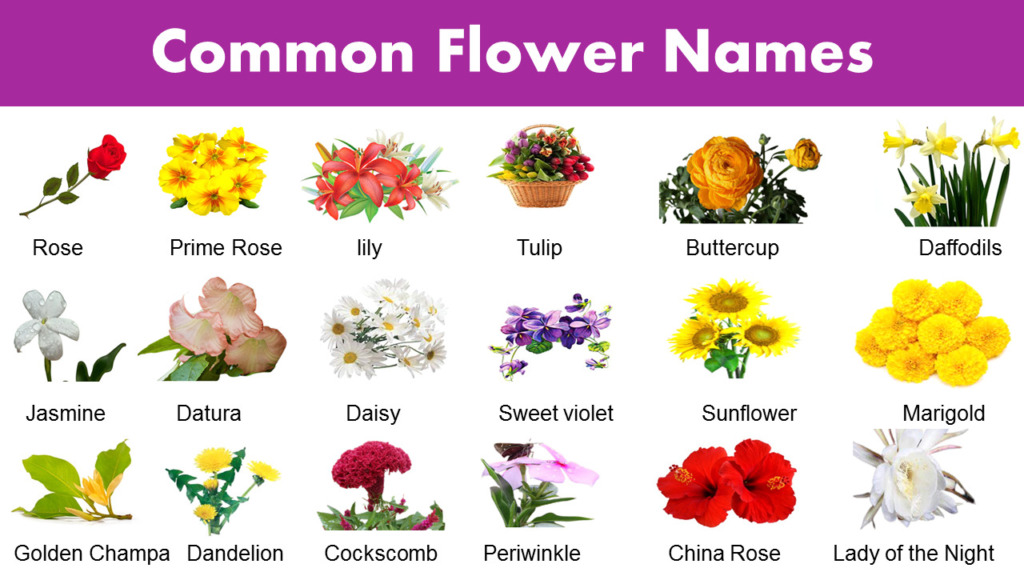Chemistry is a fascinating and complex subject that relies heavily on the use of various lab equipment to conduct experiments and analyze samples. Whether you are a student, a professional chemist, or simply someone interested in the field, it is important to have a good understanding of the different types of Chemistry lab equipment and their uses. In this blog post, we will provide you with a comprehensive list of lab equipment commonly used in chemistry, including their names, uses, and pictures. This information will help you gain a deeper understanding of the tools used in chemistry labs, and how they are used to further our understanding of the world around us.
Chemistry Lab Equipment List
- Buchner funnel
- Polarimeter
- Test tube
- Crucible
- Sonicator
- Magnetic stirrer
- Thermometer
- Erlenmeyer flask
- Bunsen burner
- Laser
- Hot plate stirrer
- Rotary evaporator
- Refractometer
- Spectrophotometer
- Electrode
- Electroscope
- Glass tubing
- pH meter
- Safety apron
- Burette
- Safety goggles
- Watch glass
- Pipette
- Volumetric flask
- Melting point apparatus
- Mass balance
- Infrared spectrophotometer
- Gas chromatography column
- Microscope
- Rubber stopper
- Separatory funnel
- Ultraviolet-visible spectrophotometer
- Flame photometer
- NMR spectrometer
- Gas syringe
- Filter paper
- Colorimeter
- Conductivity meter
- Potentiometer
- Ammeter
- Voltmeter
- Electrolysis apparatus
- Reflux condenser
- Graduated cylinder
- Hot plate
- Beaker
- Evaporating dish
- Stirring rod
- Test tube rack
- Gas collection tube
Chemistry Laboratory Apparatus and Their Uses
Here are some commonly used lab equipment in chemistry and their uses:
Beaker
Used for holding and mixing liquids.
Burette
Used for dispensing precise amounts of liquid.
Erlenmeyer flask
Used for holding and mixing liquids, and can also be used for heating and cooling.
Graduated cylinder
Used for measuring volumes of liquids.
Pipette
Used for measuring and transferring small volumes of liquids.
Test tube
Used for holding small amounts of liquids or solids, and can also be used for heating and mixing.
Crucible
Used for heating substances to high temperatures.
Bunsen burner
Used for heating substances.
Thermometer
Used for measuring temperature.
Balance
Used for measuring mass.
Microscope
Used for viewing small objects.
Spectrophotometer
Used for measuring the absorption or emission of light by a substance.
pH meter
Used for measuring the acidity or alkalinity of a solution.
Hot plate
Used for heating substances.
Stir plate
Used for stirring solutions.
Separatory funnel
Used for separating immiscible liquids based on density.
Buchner funnel
Used for vacuum filtration.
Retort stand
Used for holding and supporting lab equipment.
Clamps
Used for holding lab equipment in place on a retort stand.
Watch glass
Used for holding small amounts of solids or liquids, and can also be used for covering beakers and evaporating small amounts of liquids.
Mortar and pestle
Used for grinding and pulverizing solids into powders.
Volumetric flask
Used for preparing solutions of a precise volume.
Filter paper
Used for filtering solids from liquids.
Gas syringe
Used for measuring the volume of gases produced in chemical reactions.
Gas collecting tube
Used for collecting gases produced in chemical reactions.
Desiccator
Used for drying or storing moisture-sensitive substances.
Condenser
Used for cooling and condensing vapors into liquids.
Distillation apparatus
Used for separating mixtures of liquids with different boiling points.
Centrifuge
Used for separating liquids or solids based on density.
Magnetic stirrer
Used for stirring solutions using a magnetic field.
Electrochemical cell
Used for studying redox reactions and electrochemistry.
Conductivity meter
Used for measuring the electrical conductivity of solutions.
Refractometer
Used for measuring the refractive index of liquids.
Polarimeter
Used for measuring the optical rotation of chiral substances.
Gas chromatograph
Used for separating and analyzing the components of a gas mixture.
High-performance liquid chromatograph (HPLC)
Used for separating and analyzing the components of a liquid mixture.
Mass spectrometer
Used for identifying the molecular weight and structure of substances.
Fourier-transform infrared spectrometer (FTIR)
Used for identifying the functional groups present in a substance.
Nuclear magnetic resonance (NMR) spectrometer
Used for studying the structure and composition of organic molecules.
UV-Vis spectrophotometer
Used for measuring the absorption of ultraviolet and visible light by a substance.
Laser
Used for generating intense, coherent light for spectroscopy and other experiments.
Microscale glassware
Used for performing chemical reactions on a small scale.
Stopcock
Used for controlling the flow of liquids or gases in a reaction vessel.
Rubber septum
Used for sealing reaction vessels and injecting samples into gas chromatographs.
Schlenk line
Used for handling air-sensitive or moisture-sensitive substances under inert gas conditions.
Soxhlet extractor
Used for extracting a soluble compound from a solid sample.
Kjeldahl apparatus
Used for determining the nitrogen content in organic compounds.
Polarizing microscope
Used for studying the optical properties of minerals and crystals.
Coulometer
Used for measuring the amount of electricity required to carry out a reaction.
Potentiostat
Used for studying electrochemical reactions and corrosion.
Must Try: Different Lab Equipment Names and Pictures
Chemistry Lab Equipment Names and Pictures




